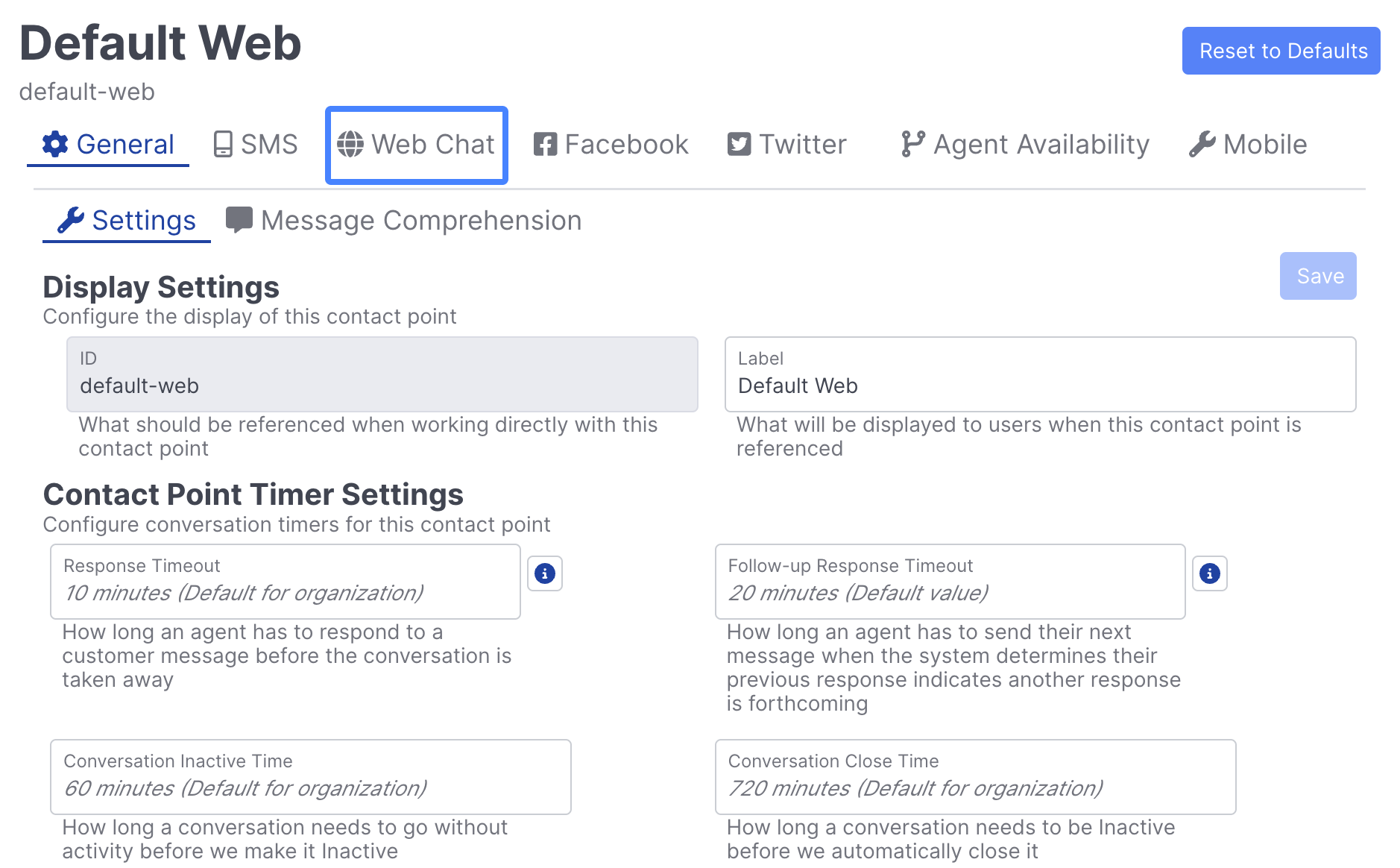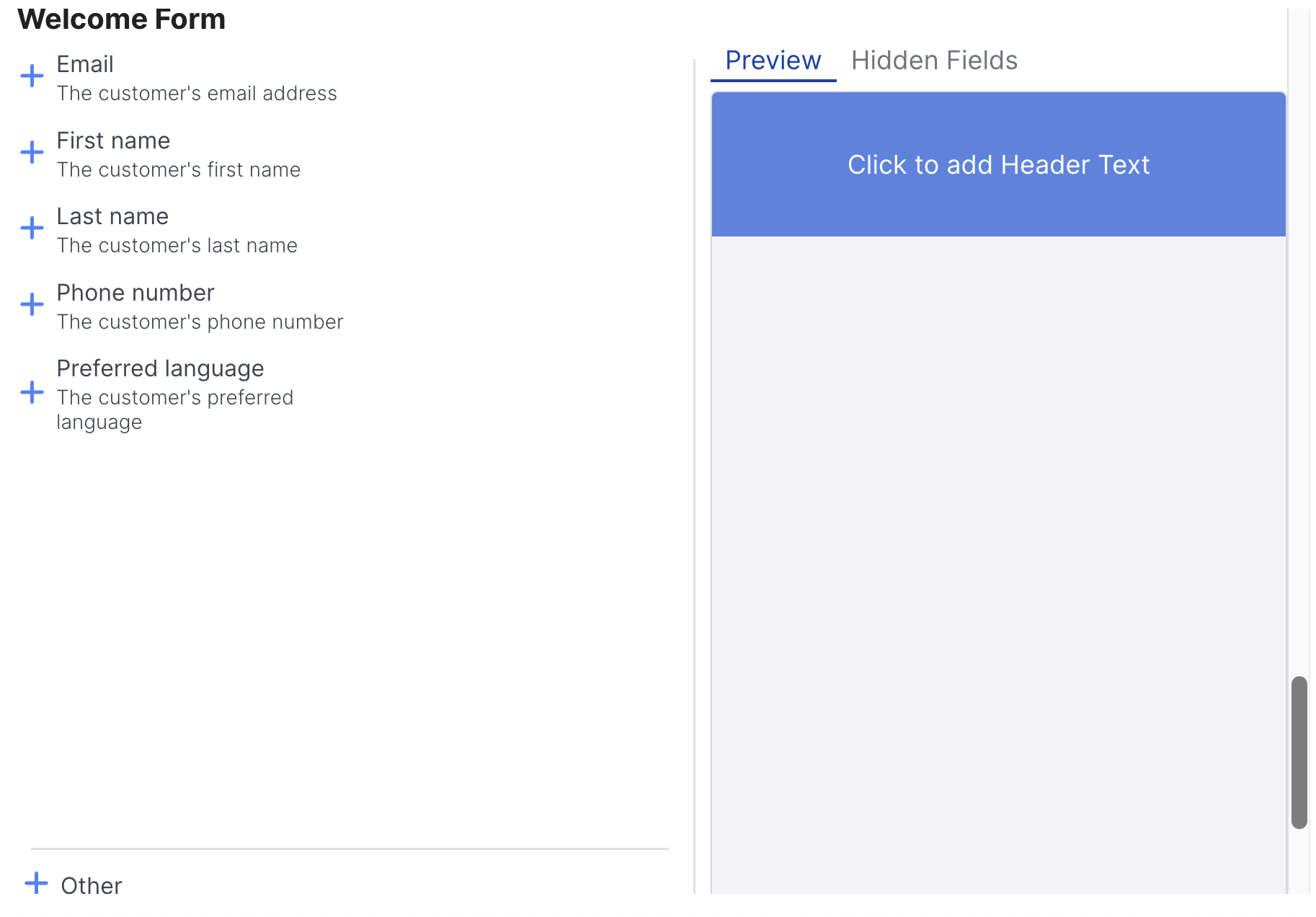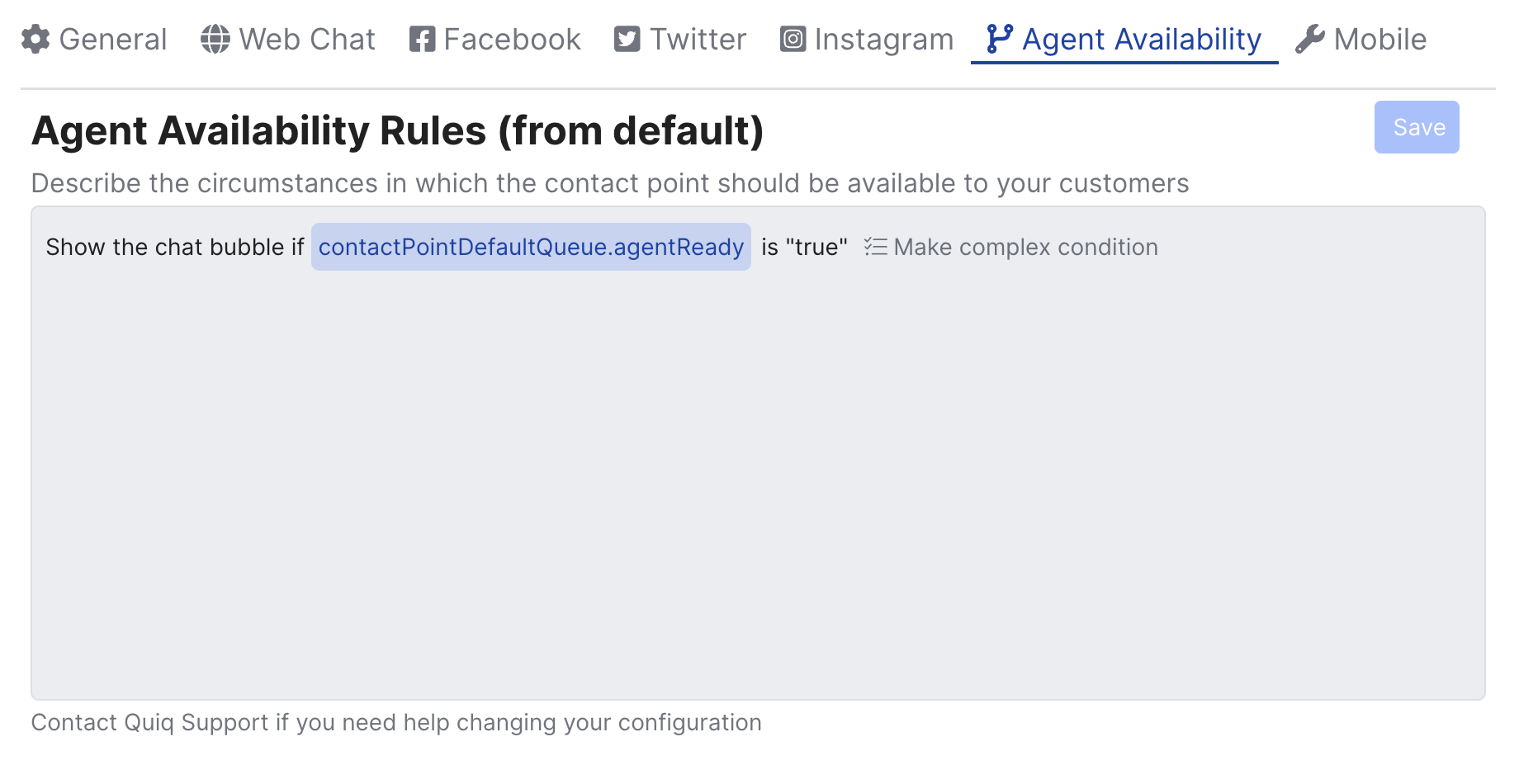Web Chat
The Web Chat tab enables admins to configure web chat specific settings for a given contact point.

Web Chat Enabled
This is the master switch allowing the Admin to control whether web chat is turned on or off:

Toggling to off makes the remainder of the options unavailable. Enabling Web Chat here is not the same as implementing it on a web page. Reference the Quiq web chat SDK for details on placing the chat client on a web site.
Web Chat Status
Indicates whether the web chat button would be visible given the Agent Availability Rules configured for the web chat platform on this contact point.

After a rules change, this will be re-evaluated and may take up to a minute to update.
Web Chat Settings

Email Transcript
Causes a button to appear at the end of a web chat conversation that allows the user to request a transcript of the web chat conversation.
Download Transcript
Cause a button to appear in the header menu that enables users to download a .txt file of their transcript at any point.
User File Attachments
Enables the ability for the customer to attach files to a web chat, making the file available to an agent. This is essentially the same functionality as SMS attachments but can be disabled in web chat for added security. Only a certain set of file types are available for upload such as images and PDF files. For a full list of supported files types please see the list here.
Agent File Attachments
Enables the ability for agents to attach and send files to a customer via web chat.
Emojis
Enables a set of emojis for the customer to include in messages sent.
Play Sounds
Sound notifications for the end user bring attention to notifications generated by the web chat. Toggle this off to disable sounds.
This sound will only play when webchat is closed, or when it is not the active tab on desktop web chat.
6. Title Bar Notifications
Toggle on to allow the browser tab to be changed indicating web chat events:

Title bar flashing only works on desktop web chat.
Whitelisted Domains
Entries here control what web sites are allowed to host chat clients associated to the contact point. A blank entry allows any server. Quiq recommends this always be completed for security purposes. Use wildcards to allow multiple hosts to display the chat client.
Mobile Options
Allows Mobile users to be redirected to their SMS application and a new message window with the phone number entered here as the recipient on the mobile messaging app. This allows redirection of mobile devices away from web chat and to the native mobile messaging platform.
Menu Options
Allows offsets and additional items or links to be added to the end user’s web chat menu.
Web Chat Colors
Color styling may be accomplished here vs having to apply extra JavaScript parameters to the web implementation. This allows a Quiq Admin to change the web chat appearance without any web developer time consumed or change orders required. The preview to the right allows a realtime review of how the chat window will appear the the end user.
Web Chat Fonts
Allows selection of a specific font to be used for the end user web chat window. Note the specifics in the settings description here.
Welcome Form
This section allows creation of a Welcome Form which is displayed to end users before they are passed to the chat dialog screen. Fields may be marked as required and thus must be filled to allow the user to submit the form. Fields are placed in the order added to the form. Ensure that the desired top field is added first, and subsequent fields are added in order.
Custom Fields must be edited after being added, to change the label and required options.
After changes are made to the form, click the Save button at the top right of the panel.

⚠️ NOTEThe form defined here will override any form field definitions implemented by your web team. Welcome form fields will be deprecated in the web chat client, and defining the welcome form here will permanently disable their use via JavaScript.
Agent Availability Rules
Complex conditions and parameters may be set here to define when the web chat option is visible on a page. While the title suggests the original capability of just being shown when agents are available, rules may now consider a large set of variables to determine if the web chat icon is displayed.

Note that this may be overridden by the JavaScript used on the page where web chat is provided. These rules will work for a default implementation.
Conditions may be added for time of day or day of week, queue volumes, available agents, etc. Reference the Conversation Rules section for specifics on the Rule editor. Once changes are made, it is necessary to scroll to the top of the page and click the Save button to ensure changes are applied. Once saved, the Web Chat Status will update to indicate if the chat button should be displayed.
Updated about 2 months ago
